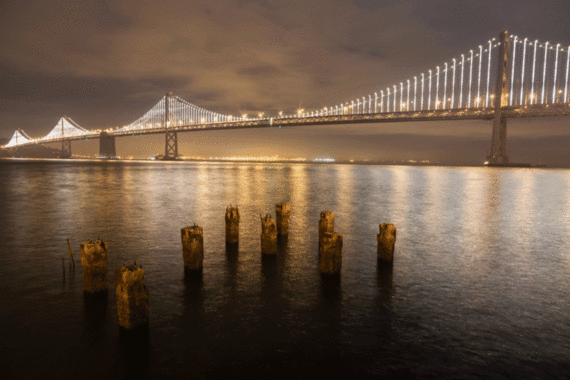The Transcontinental Railroad is associated with some of the most influential figures in American history: Abraham Lincoln, who authorized its construction on July 1, 1862, and Leeland Stanford, founder of Stanford University, who drove the final golden spike connecting the two railroads in 1869. But few people remember the original thinker behind what was ultimately one of the most influential infrastructure projects in the history of our country: Theodore Judah.
Judah was an American railroad and civil engineer, and the first to actively promote, fundraise for, and design the Transcontinental Railroad. In 1851, nearly 20 years before the railroad was completed, Judah persuaded investors to finance this project for the future of our country. Pitching his idea to the Central Pacific Railroad Company in 1857 he noted a "lack of confidence in private capitalists, dissuading them from investing in any project, through which they [could not] see their way clear." But Judah was able to see a clear path where others were not. Judah saw America not as two coasts existing separately, but as one truly united nation.
Judah ironically never lived to see his work come to fruition nearly 20 years later. He died of yellow fever on a journey to New York in 1863 where he planned to speak with more investors. We have Judah to thank for pursuing innovation in the face of all adversity -- creating what many hail today as the Internet of the 19th Century.
This is often how innovation occurs -- one person or in this case one person and a few very powerful actors, recognize an unrecognized need and invest in a solution. Judah could have worked in local trade routes, or invested in west coast companies flourishing from the gold rush. But instead he abandoned short-term gratification in favor of long-term societal benefits -- this is the essence of Longpath.
Longpath, more specifically, is the idea that there is no inevitable future. It challenges us to use the information we have today to solve the problems of tomorrow before they fully materialize. The Longpath framework asks innovators to imagine a North Star -- a picture of the world they wish to live in, and then work to achieve it.
Today marks the last day of Infrastructure week -- a time designed to spur discussion about the deteriorating condition of our nation's infrastructure, and define solutions for a way forward.
In no place perhaps is Longpath thinking more essential than within the discussion of infrastructure -- decisions made today will directly determine transportation, housing and communication systems 10, 20 -- even 100 years from now. A quick look at the history books will remind you that New York's subway system first opened just over 100 years ago in 1904. How will New Yorkers get around in the year 2114? And perhaps even more importantly, how should they get around?
The mere fact that a week dedicated to infrastructure is necessary demonstrates a significant shift in American thought away from Longpath thinking towards a culture of short-termism. There is no doubt that it's daunting to see beyond the next 140 characters, this morning's market price, or the next election cycle. Budgets are tight, time is of the essence, and taking the Longpath is risky when the quick fix, the short path, is right in front of you.
But short-term thinking has real consequences. At this very moment Congress is deciding whether to pass a housing and transportation bill that will cut about $1.8 billion from current program funding and "save" taxpayer dollars. These cuts would mean less investment in high-speed rail, roadwork, bridge building, and transit maintenance; further compromising our already degenerated infrastructure. If passed, many projects would be delayed or shut down completely and our economy would lose more than 700,000 jobs.
The American economy is struggling to stay on its feet, and saving taxpayer dollars is a valid concern. There is no question that the pressing current problems of today deserve our attention and many of America's best minds are working tirelessly to solve them. But, in the confines of short-term thinking, we cannot adequately solve, or even imagine, the problems of tomorrow. Moreover, if we can identify those problems now it will cost infinitely less time and resources to solve them.
To get us back on the path of rebuilding America's infrastructure, we need more Longpath innovators -- and especially policy-makers -- who are willing to use the information we have today to solve the long-term challenges that are just starting to materialize.
"Investments in infrastructure, which have a high rate of return, are crippled primarily because the mechanisms of America are organized toward protecting yesterday instead of creating tomorrow" -- President Bill Clinton, April 3, 2014
Like President Clinton and the late Theodore Judah, I ask our leaders to imagine and inspire us to create a normative future. Not a post-apocalyptic reality as dreamed up by Hollywood at worst, or a world stuck in political gridlock and malaise at best. But rather, a North Star: the way we want to see the world look 50 years from now. Only then can we work together towards a common goal. A goal that starts with a foundation -- both literally and figuratively -- and renews America's promise to future generations for opportunity, prosperity and well-being.
